Abstract
We studied the influence of respiration on muscle sympathetic and cardiac vagal activities in twenty conscious, healthy young adult subjects. Efferent post-ganglionic muscle sympathetic activity was measured directly with electrodes inserted percutaneously into a peroneal nerve, and vagal cardiac activity was measured indirectly from electrocardiographic changes of heart period. Muscle sympathetic activity waxed and waned with respiration; maximum activity occurred at end-expiration and minimum activity occurred at end-inspiration. Voluntary control of breathing did not alter the time course or magnitude of muscle sympathetic outflow. Spectral analyses showed that respiratory periodicities were present in sympathetic and vagal records. Average power at frequencies below respiratory frequencies exceeded or equalled that at respiratory frequencies in both muscle sympathetic and vagal cardiac records. A cardiac periodicity was present and conspicuous in muscle sympathetic recordings in all but one subject. Diastolic arterial pressure increased during inspiration and decreased during expiration. Heart period and muscle sympathetic activity paralleled each other and were related reciprocally to changes of diastolic pressure. Brief reductions of carotid baroreceptor afferent traffic provoked by neck pressure were more effective in increasing sympathetic activity in expiration than inspiration. We conclude that quiet respiration is associated with parallel phasic changes in activity of medullary vagal cardiac and spinal muscle sympathetic motonuclei in man; spontaneous activity and susceptibility to excitation or inhibition by autonomic inputs are greater in expiration than inspiration. Substantial power is present in both muscle sympathetic and cardiac vagal recordings at frequencies below respiratory frequencies.
Full text
PDF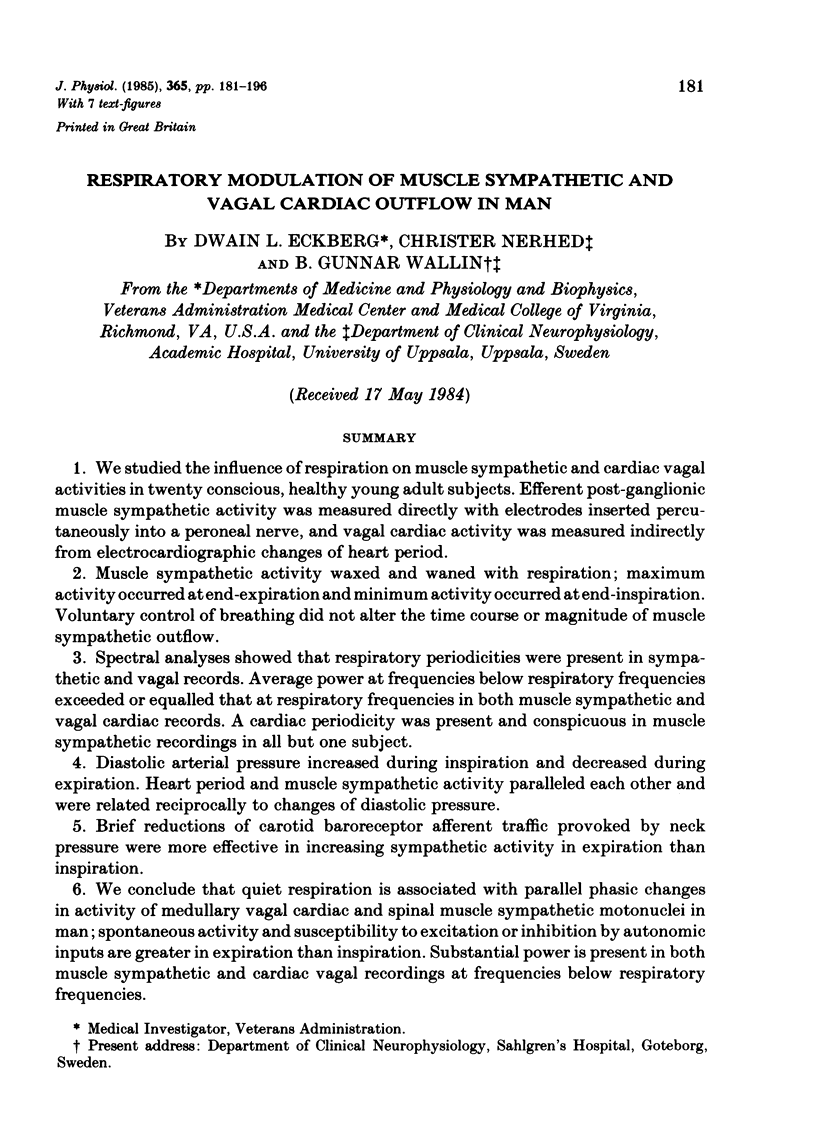
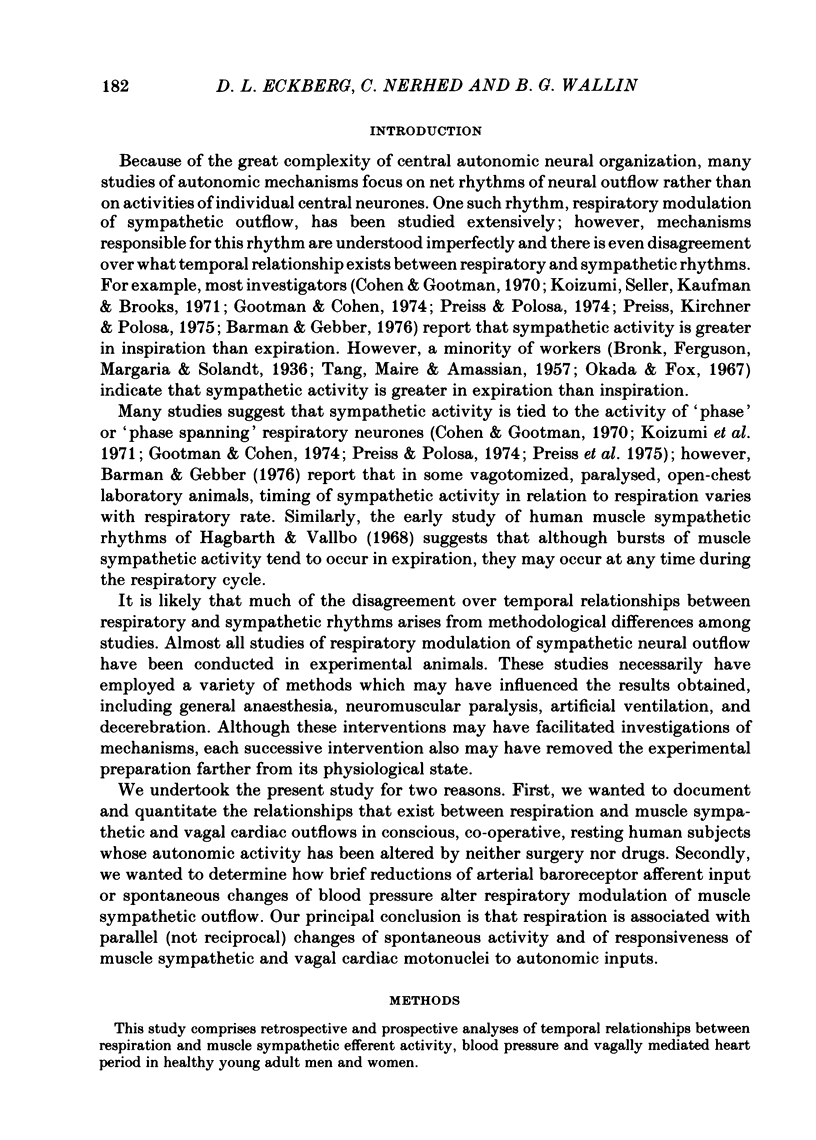
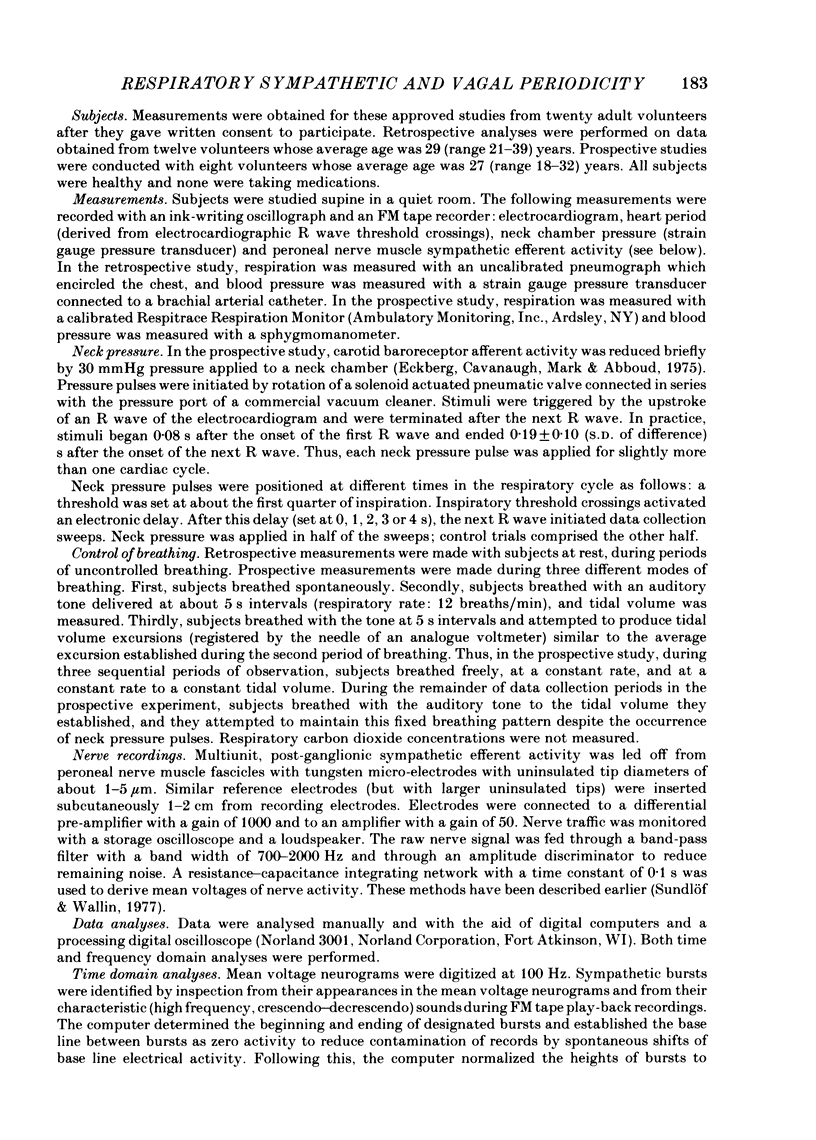
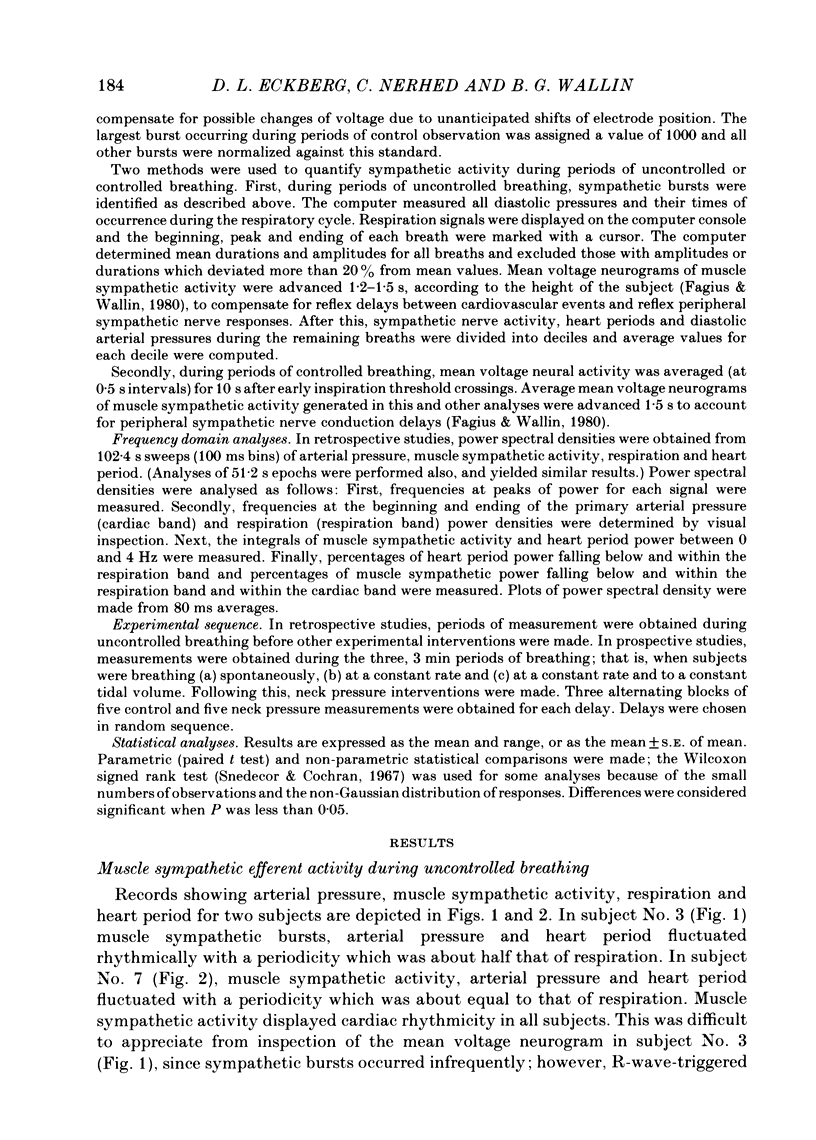
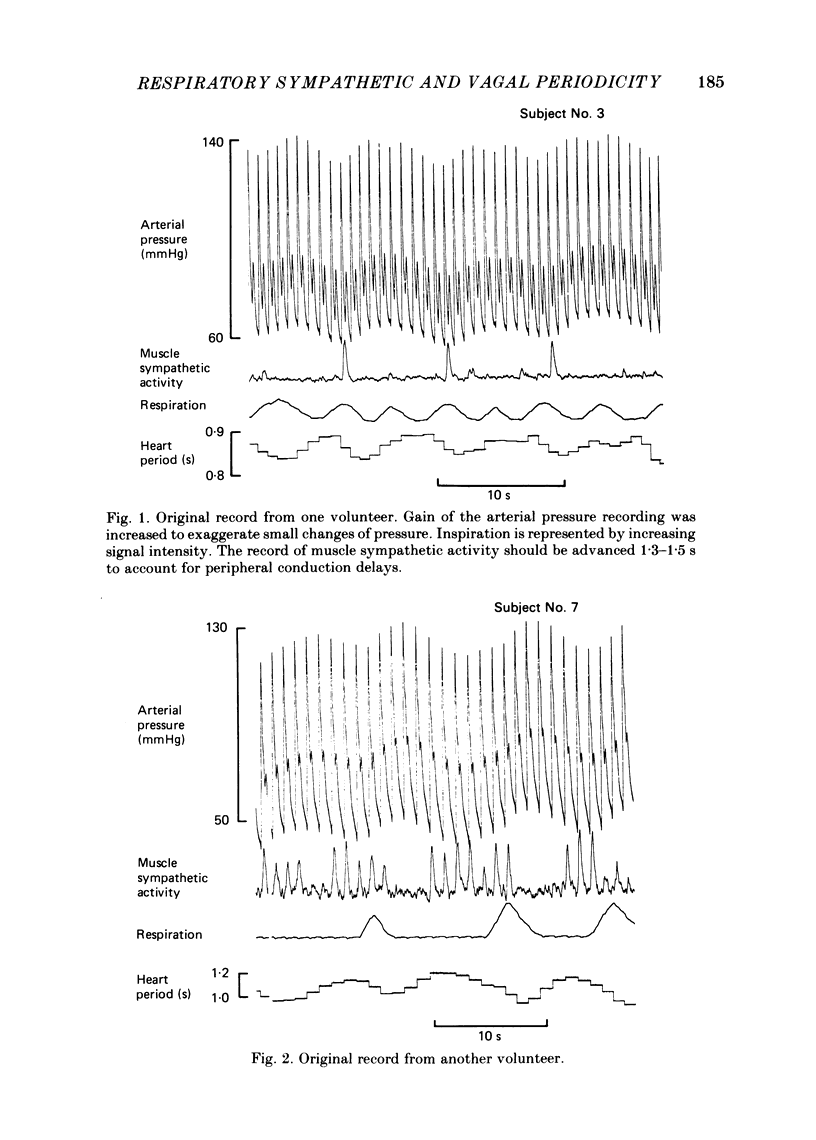

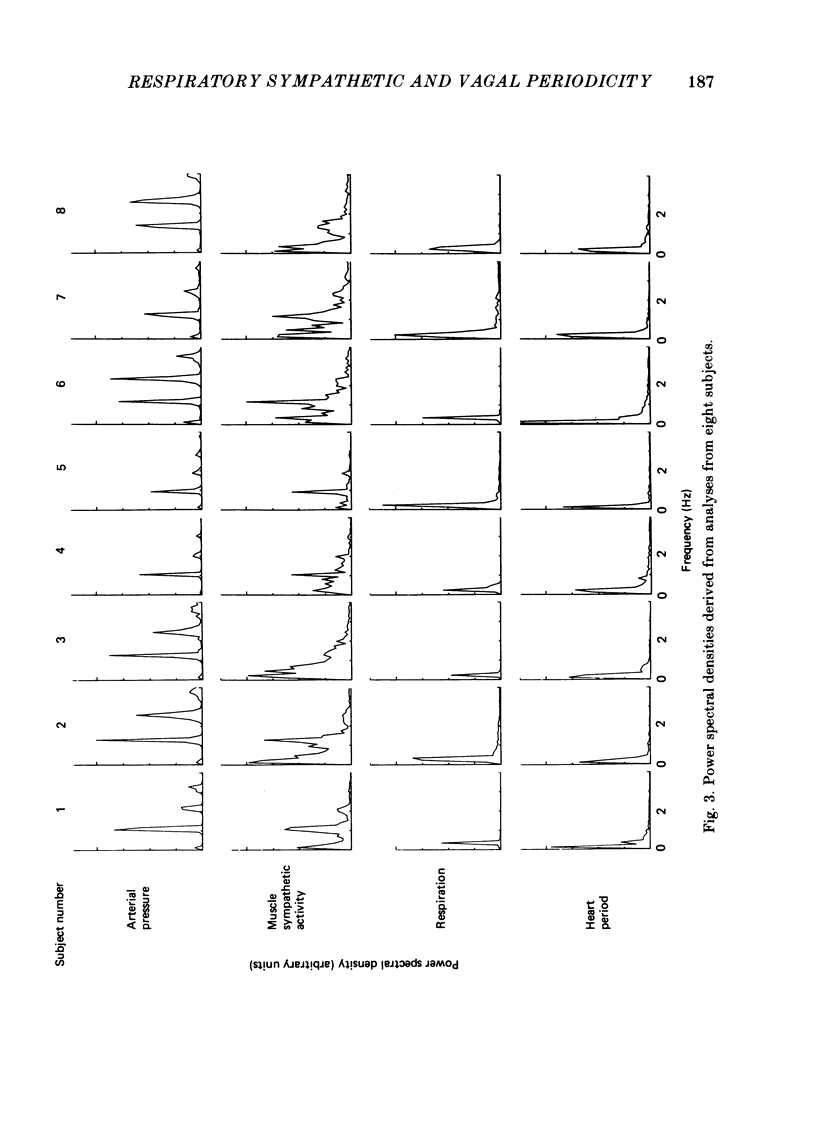
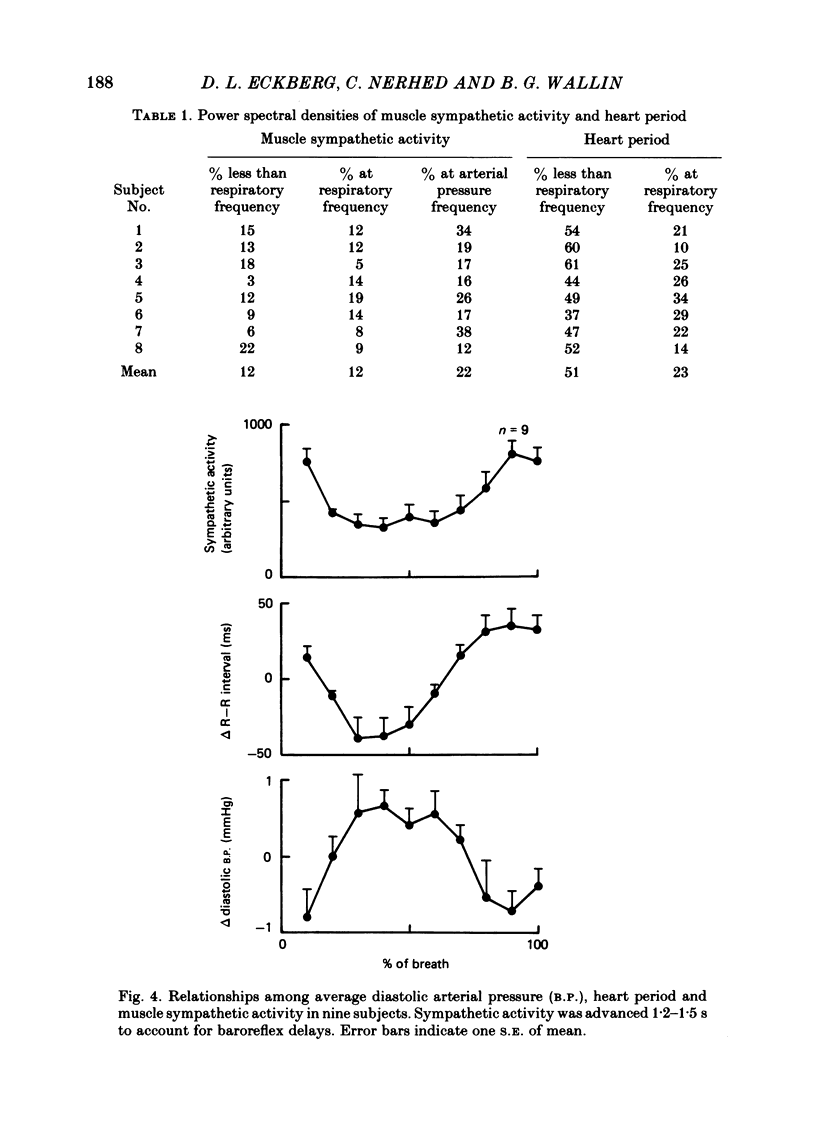
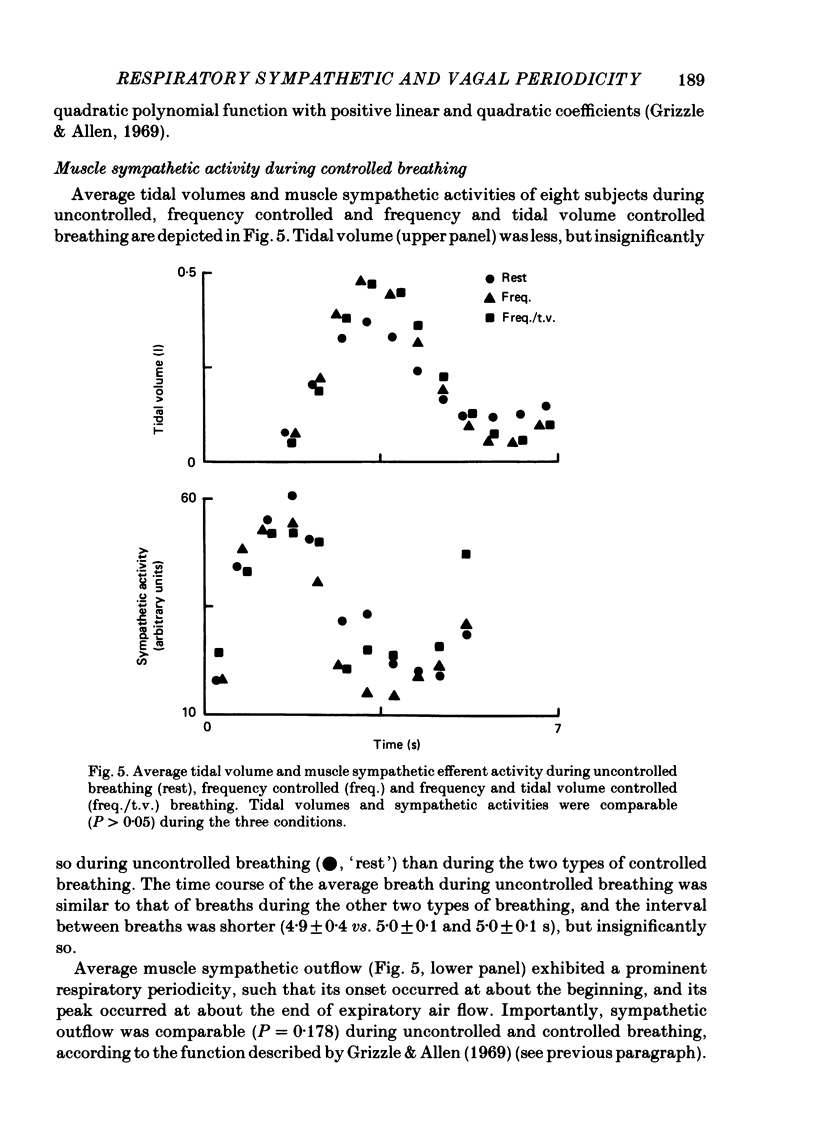
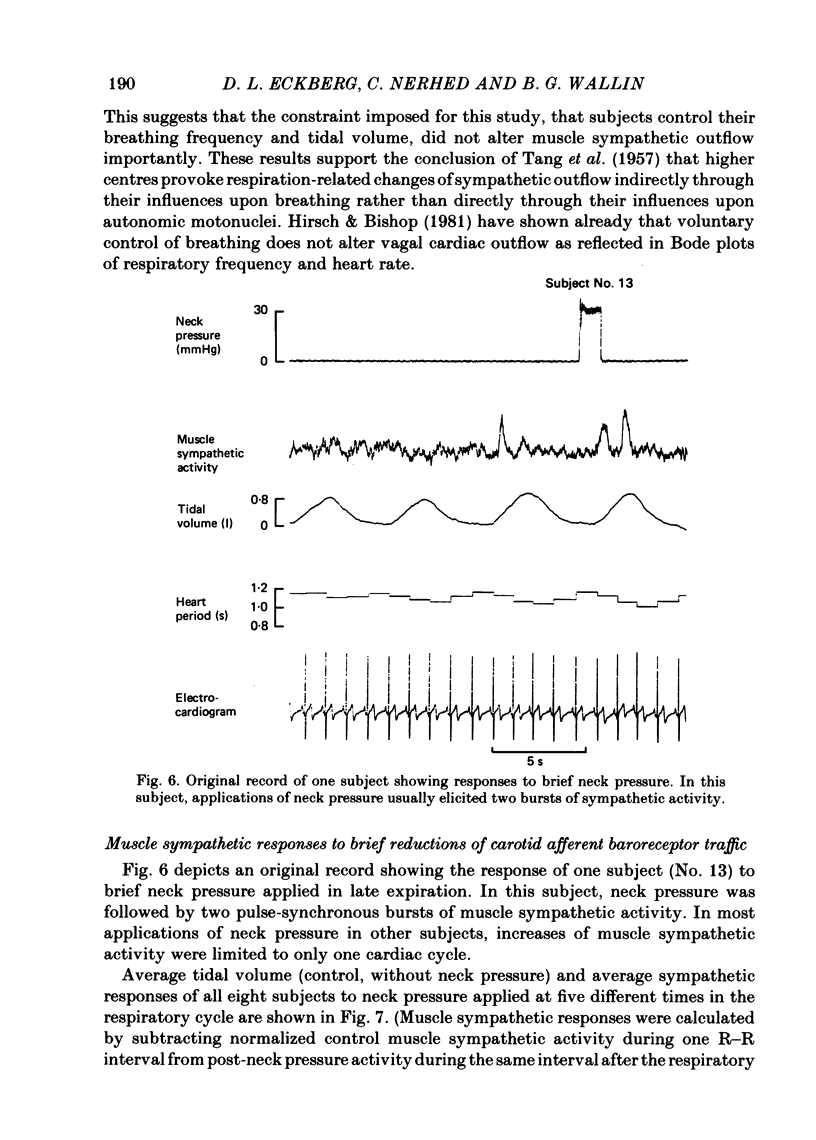
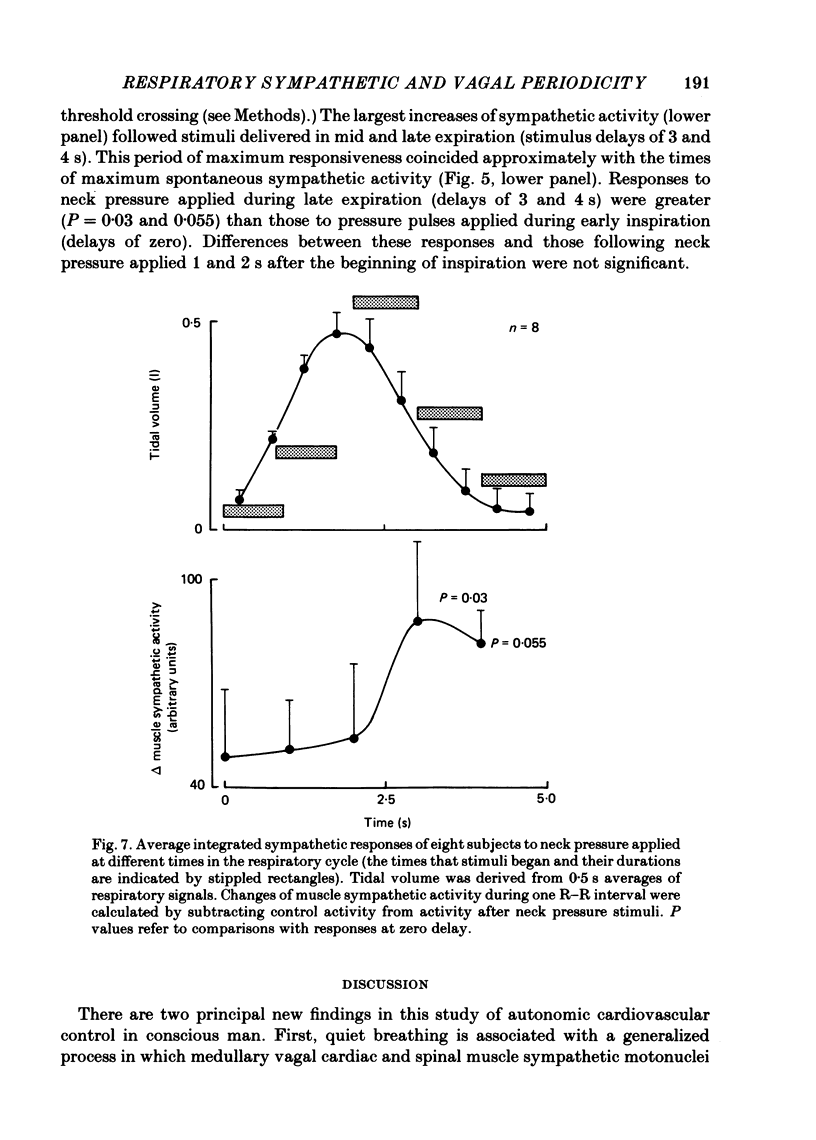
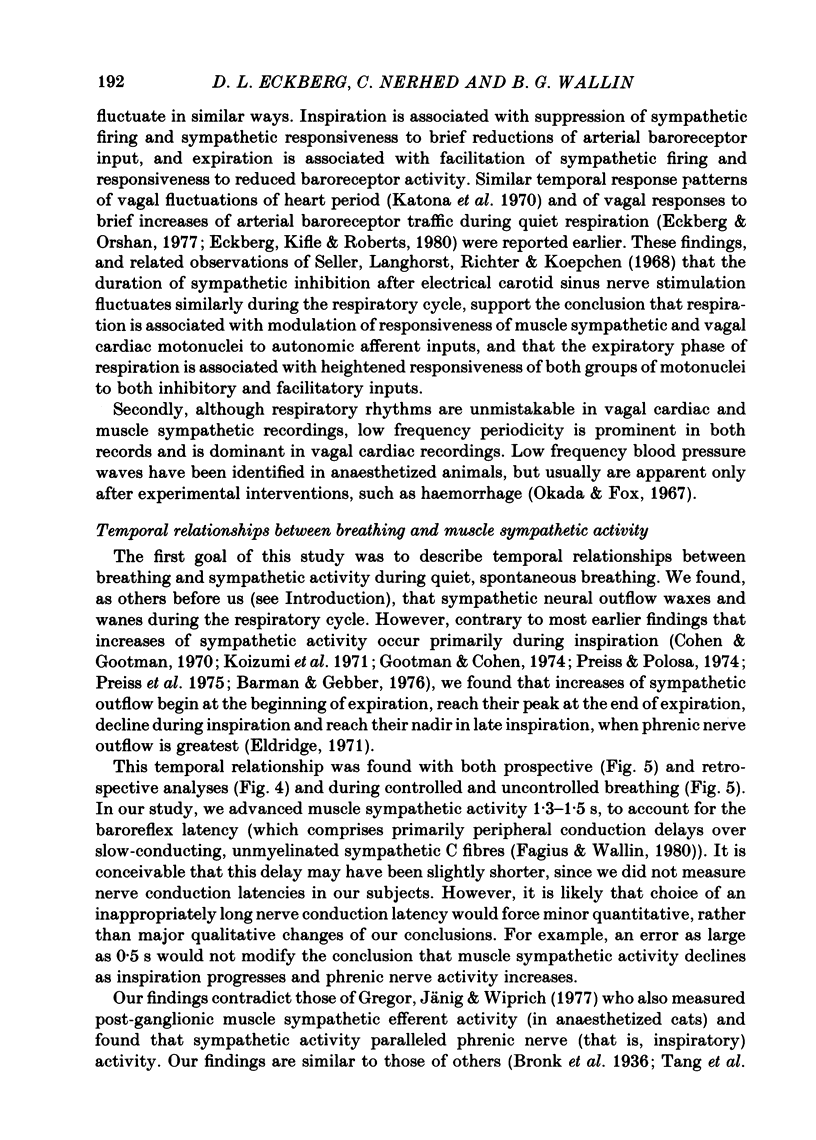
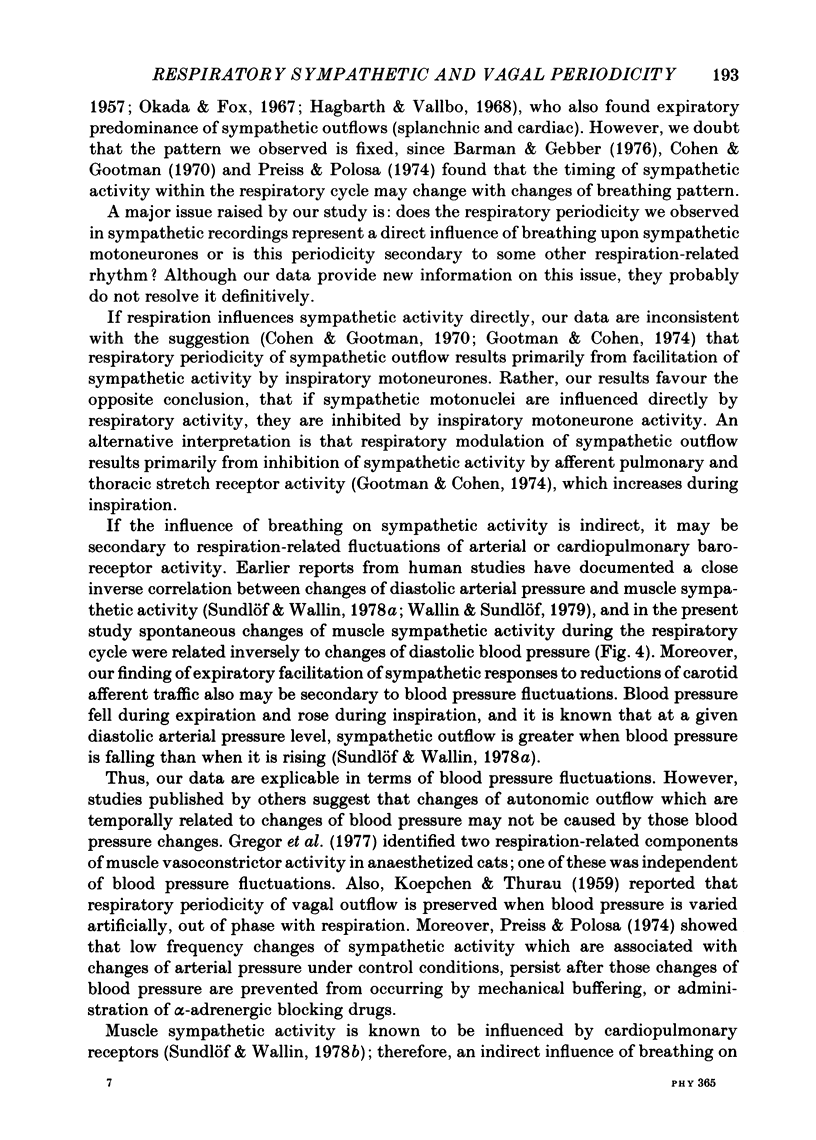
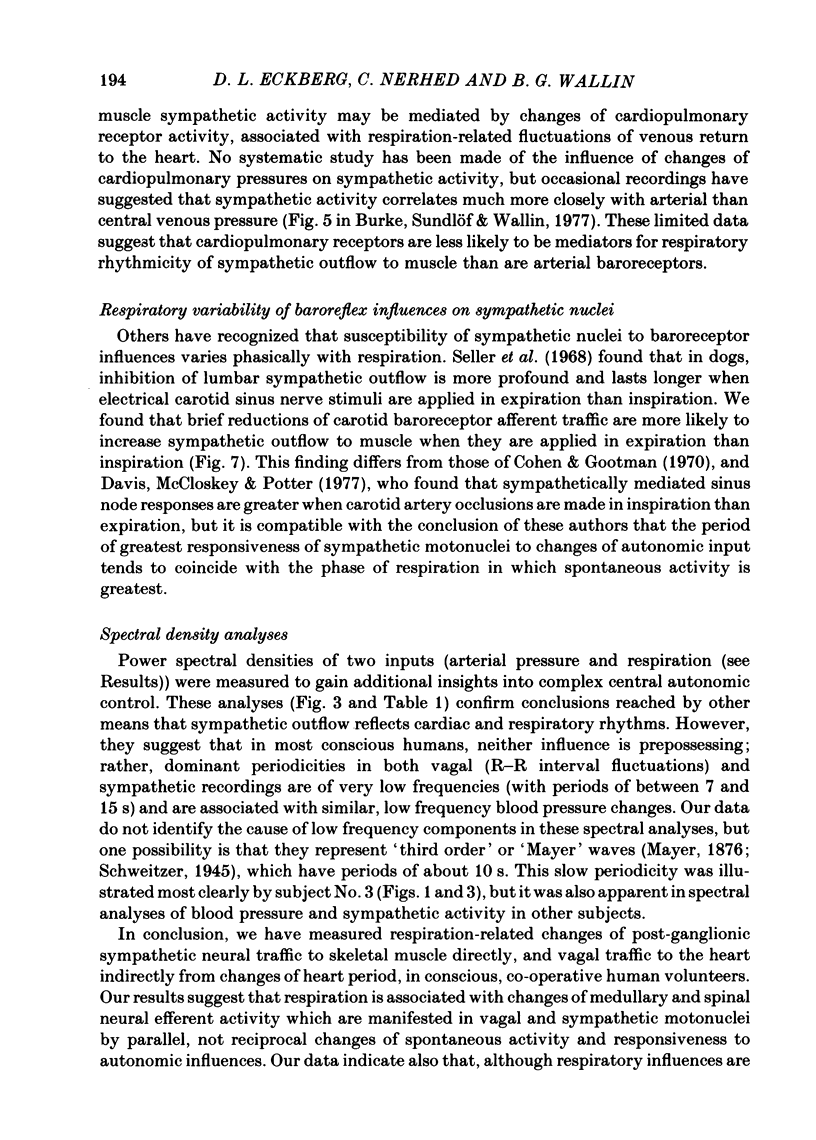
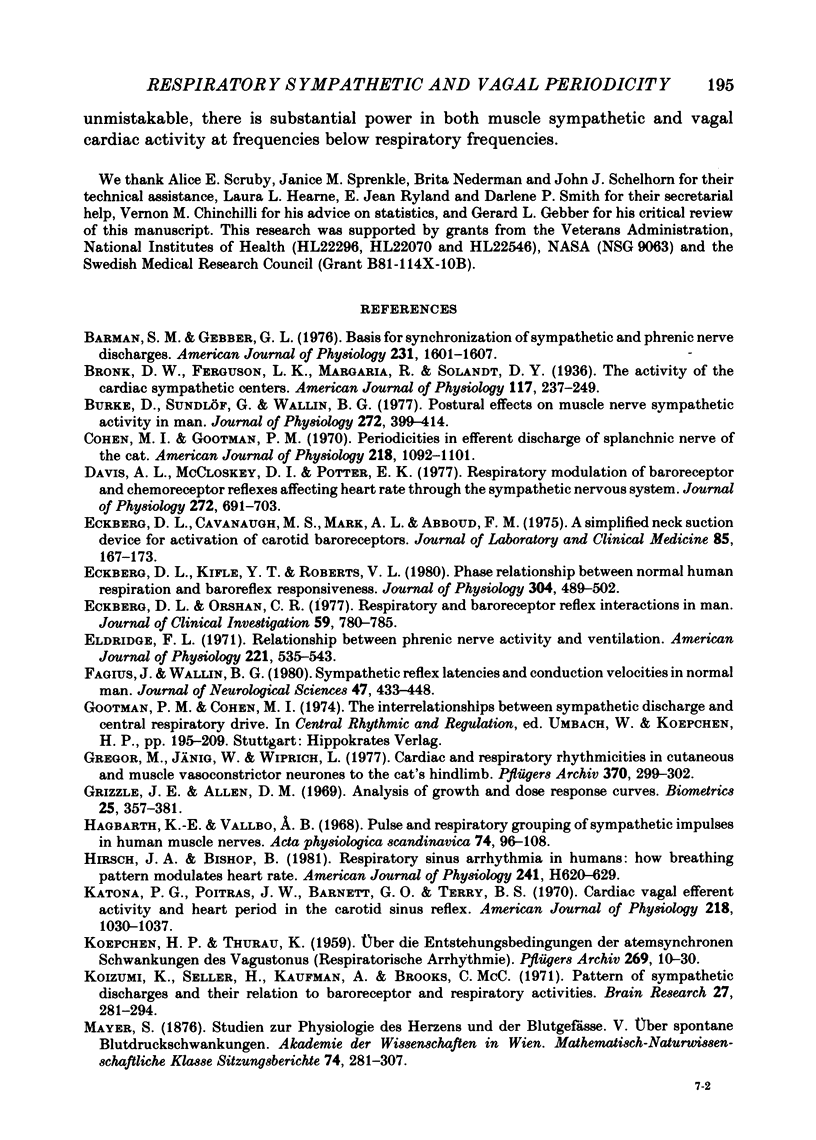
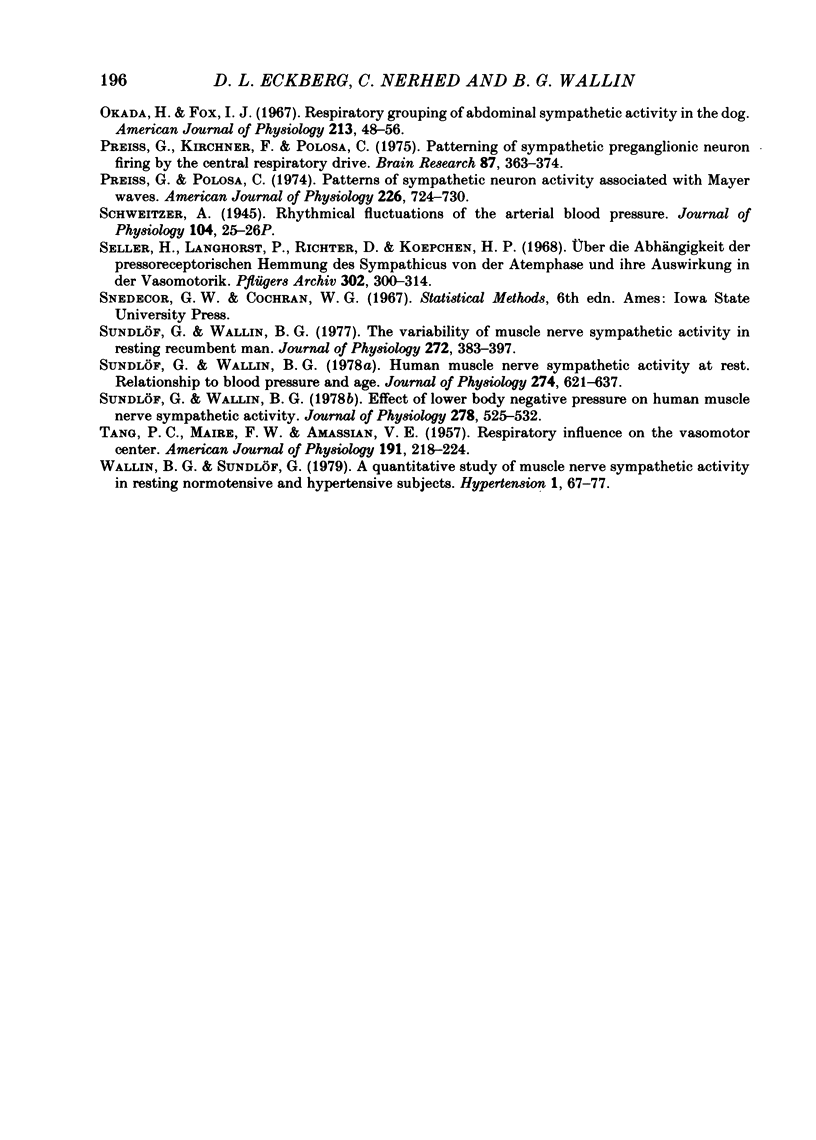
Selected References
These references are in PubMed. This may not be the complete list of references from this article.
- Barman S. M., Gebber G. L. Basis for synchronization of sympathetic and phrenic nerve discharges. Am J Physiol. 1976 Nov;231(5 Pt 1):1601–1607. doi: 10.1152/ajplegacy.1976.231.5.1601. [DOI] [PubMed] [Google Scholar]
- Burke D., Sundlöf G., Wallin G. Postural effects on muscle nerve sympathetic activity in man. J Physiol. 1977 Nov;272(2):399–414. doi: 10.1113/jphysiol.1977.sp012051. [DOI] [PMC free article] [PubMed] [Google Scholar]
- Cohen M. I., Gootman P. M. Periodicities in efferent discharge of splanchnic nerve of the cat. Am J Physiol. 1970 Apr;218(4):1092–1101. doi: 10.1152/ajplegacy.1970.218.4.1092. [DOI] [PubMed] [Google Scholar]
- Davis A. L., McCloskey D. I., Potter E. K. Respiratory modulation of baroreceptor and chemoreceptor reflexes affecting heart rate through the sympathetic nervous system. J Physiol. 1977 Nov;272(3):691–703. doi: 10.1113/jphysiol.1977.sp012067. [DOI] [PMC free article] [PubMed] [Google Scholar]
- Eckberg D. L., Cavanaugh M. S., Mark A. L., Abboud F. M. A simplified neck suction device for activation of carotid baroreceptors. J Lab Clin Med. 1975 Jan;85(1):167–173. [PubMed] [Google Scholar]
- Eckberg D. L., Kifle Y. T., Roberts V. L. Phase relationship between normal human respiration and baroreflex responsiveness. J Physiol. 1980 Jul;304:489–502. doi: 10.1113/jphysiol.1980.sp013338. [DOI] [PMC free article] [PubMed] [Google Scholar]
- Eckberg D. L., Orshan C. R. Respiratory and baroreceptor reflex interactions in man. J Clin Invest. 1977 May;59(5):780–785. doi: 10.1172/JCI108699. [DOI] [PMC free article] [PubMed] [Google Scholar]
- Eldridge F. L. Relationship between phrenic nerve activity and ventilation. Am J Physiol. 1971 Aug;221(2):535–543. doi: 10.1152/ajplegacy.1971.221.2.535. [DOI] [PubMed] [Google Scholar]
- Fagius J., Wallin B. G. Sympathetic reflex latencies and conduction velocities in normal man. J Neurol Sci. 1980 Sep;47(3):433–448. doi: 10.1016/0022-510x(80)90098-2. [DOI] [PubMed] [Google Scholar]
- Gregor M., Jänig W., Wiprich L. Cardiac and respiratory rhythmicities in cutaneous and muscle vasoconstrictor neurones to the cat's hindlimb. Pflugers Arch. 1977 Sep 16;370(3):299–302. doi: 10.1007/BF00585543. [DOI] [PubMed] [Google Scholar]
- Grizzle J. E., Allen D. M. Analysis of growth and dose response curves. Biometrics. 1969 Jun;25(2):357–381. [PubMed] [Google Scholar]
- Hagbarth K. E., Vallbo A. B. Pulse and respiratory grouping of sympathetic impulses in human muscle-nerves. Acta Physiol Scand. 1968 Sep-Oct;74(1):96–108. doi: 10.1111/j.1748-1716.1968.tb04218.x. [DOI] [PubMed] [Google Scholar]
- Hirsch J. A., Bishop B. Respiratory sinus arrhythmia in humans: how breathing pattern modulates heart rate. Am J Physiol. 1981 Oct;241(4):H620–H629. doi: 10.1152/ajpheart.1981.241.4.H620. [DOI] [PubMed] [Google Scholar]
- KOEPCHEN H. P., THURAU K. Uber die Entstehungsbedingungen der atemsynchronen Schwankungen des Vagustonus (Respiratorische Arrhythmie). Pflugers Arch. 1959;269(1):10–30. doi: 10.1007/BF00362968. [DOI] [PubMed] [Google Scholar]
- Katona P. G., Poitras J. W., Barnett G. O., Terry B. S. Cardiac vagal efferent activity and heart period in the carotid sinus reflex. Am J Physiol. 1970 Apr;218(4):1030–1037. doi: 10.1152/ajplegacy.1970.218.4.1030. [DOI] [PubMed] [Google Scholar]
- Koizumi K., Seller H., Kaufman A., Brooks C. M. Pattern of sympathetic discharges and their relation to baroreceptor and respiratory activities. Brain Res. 1971 Apr 2;27(2):281–294. doi: 10.1016/0006-8993(71)90254-x. [DOI] [PubMed] [Google Scholar]
- Okada H., Fox I. J. Respiratory grouping of abdominal sympathetic activity in the dog. Am J Physiol. 1967 Jul;213(1):48–56. doi: 10.1152/ajplegacy.1967.213.1.48. [DOI] [PubMed] [Google Scholar]
- Preiss G., Kirchner F., Polosa C. Patterning of sympathetic preganglionic neuron firing by the central respiratory drive. Brain Res. 1975 Apr 11;87(2-3):363–374. doi: 10.1016/0006-8993(75)90434-5. [DOI] [PubMed] [Google Scholar]
- Preiss G., Polosa C. Patterns of sympathetic neuron activity associated with Mayer waves. Am J Physiol. 1974 Mar;226(3):724–730. doi: 10.1152/ajplegacy.1974.226.3.724. [DOI] [PubMed] [Google Scholar]
- Seller H., Langhorst P., Richter D., Koepchen H. P. Uber die Abhängigkeit der pressorectptorischen Hemmung des Sympathicus von der Atemphase und ihre Auswirkung in der Vasomotorik. Pflugers Arch. 1968;302(4):300–314. doi: 10.1007/BF00592730. [DOI] [PubMed] [Google Scholar]
- Sundlöf G., Wallin B. G. Effect of lower body negative pressure on human muscle nerve sympathetic activity. J Physiol. 1978 May;278:525–532. doi: 10.1113/jphysiol.1978.sp012322. [DOI] [PMC free article] [PubMed] [Google Scholar]
- Sundlöf G., Wallin B. G. Human muscle nerve sympathetic activity at rest. Relationship to blood pressure and age. J Physiol. 1978 Jan;274:621–637. doi: 10.1113/jphysiol.1978.sp012170. [DOI] [PMC free article] [PubMed] [Google Scholar]
- Sundlöf G., Wallin B. G. The variability of muscle nerve sympathetic activity in resting recumbent man. J Physiol. 1977 Nov;272(2):383–397. doi: 10.1113/jphysiol.1977.sp012050. [DOI] [PMC free article] [PubMed] [Google Scholar]
- TANG P. C., MAIRE F. W., AMASSIAN V. E. Respiratory influence on the vasomotor center. Am J Physiol. 1957 Nov;191(2):218–224. doi: 10.1152/ajplegacy.1957.191.2.218. [DOI] [PubMed] [Google Scholar]
- Wallin B. G., Sundlöf G. A quantitative study of muscle nerve sympathetic activity in resting normotensive and hypertensive subjects. Hypertension. 1979 Mar-Apr;1(2):67–77. doi: 10.1161/01.hyp.1.2.67. [DOI] [PubMed] [Google Scholar]


